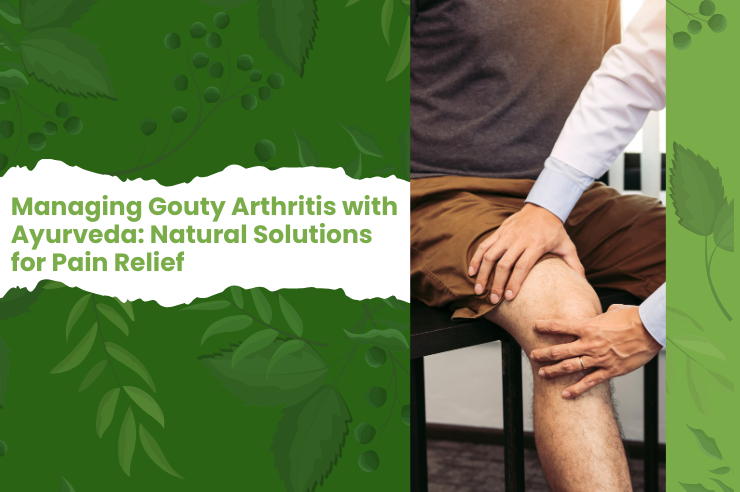Gouty Arthritis – Ayurvedic Treatment Approach
Gouty arthritis is one of the common rheumatological diseases which is often misdiagnosed or mismanaged. It’s a painful and debilitating condition, caused by accumulation of uric acid crystals in the joints.
In western medicine the condition is treated with anti-inflammatory drugs, glucocorticoids and painkillers in the acute stage which may be poorly tolerated by elderly people. Allopurinol (a purine analogue), febuxostat are preferred drugs for lowering uric acid production. Allopurinol interferes with kidney functions and produces hypersensitivity in people. Side effects of febuxostat include symptoms like dizziness and dryness of mouth. In Ayurveda the condition is managed with panchakarma and internal medicines without causing any side effects.
There are many factors that increase the likelihood of gout. That includes genetic predisposition, lifestyle, eating a high protein diet, certain medications (some diuretics and salicylate containing drugs), being overweight, and one with renal problems.
Signs and Symptoms Includes
- Symptoms develop suddenly. Usually one or more joints get affected. Big toe, knee or ankle joints are mainly involved.
- The pain frequently starts during night time and often described as throbbing, crushing or excruciating
- Erythema over the joint is seen and can’t bear touch or pressure to the affected joint during a symptomatic episode
- Often associated with fever
- Great difficulty in walking or inability to use affected joints.
- Presence of subcutaneous nodule under transparent skin(tophus)
In Ayurveda the condition can be correlated to vata pittadhika vatarakta. Vata and rakta are the main factors involved and sandhi or joints are the main site of manifestation. It is characterised by the symptoms like sandhishoola (Joint pain), Sopha (Swelling), Raga (Erythema), spsarshan ashatwam (tenderness in the affected joints) and sthamba (joint stiffness).
Various treatment modalities are there for vatarakta. The major treatment objective is to lower the serum uric acid levels to normal and prevent any damage due to hyper uricemia.The acid reflux treatment consists of external therapies like abhyanga(massage), parisheka(Pouring of medicine) Aalepa(application of paste over the skin)etc. Also, snehapanm, Virechanam, vasti and raktavisravana can be done. In the treatment modalities the important one is vasti. Acording to Ayurveda acharyas there is no procedure comparable to vasti for the cure of vata rakta. Generally in Ayurveda vasti is considered as the best treatment to alleviate vata dosha .
Upanaha sweda is one among the swedana procedures that are widely used for the treatment of inflammatory arthritis. Which has properties like tridoshahara(alleviating the three doshas).For the shamana therapy guduchi ( Tinospora cordifolia) is the first drug of choice. The drug is having antiarthritic, anti-inflammatory action. Tinosporin, the chemical constituent present in this drug has natural diuretic action which aids in the excretion of serum uric acid. It also has gastroprotective activity so that it will be beneficial to use as an analgesic. This comprises some of the procedures in Ayurvedic treatment for Gouty Arthritis. Along with the treatment some lifestyle changes and dietary modifications help to improve the condition.
Dietary Modifications
- Reduce the intake of purine rich foods like, Red meat, organs and glandular meats (liver, kidney), sea foods such as shellfish, sardine.
- Foods and beverages high in sugar especially sweetened with high fructose and corn syrup.
- Include coffee, cherries, fruits and vegetables rich in vit-c, low fat dairy products.
- Control alcohol consumption
- Maintain adequate fluid intake
With the help of weight management, engaging in moderate physical activities like yoga, reducing the stress and getting adequate sleep helps to reduce the risk of gouty arthritis.
CONCLUSION
Managing gouty arthritis through Ayurveda involves a comprehensive approach that includes herbal remedies, panchakarma therapies, dietary modifications and lifestyle changes. By addressing the root cause and maintaining a balance of doshas Ayurveda provides a holistic approach for the management of gout and helps in reducing the frequency and severity of flare ups and improve the quality of life.

